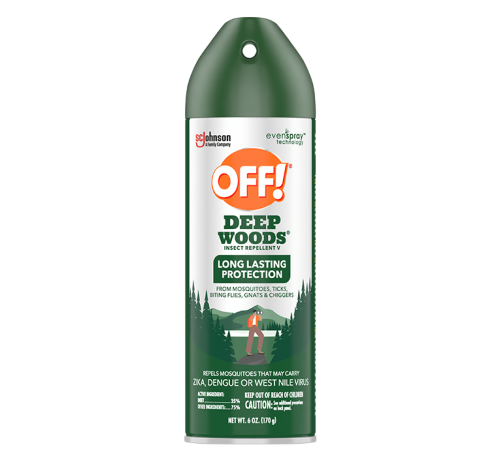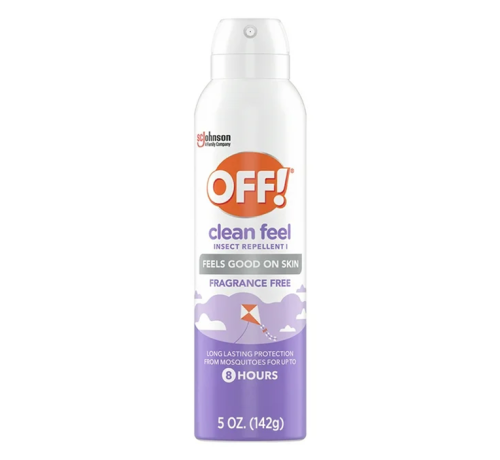Name a bigger nuisance than a bug bite. (We’ll wait.) Around-the-ears buzzing and up-at-night itching might be summer’s least pleasant duo—and figuring out how to make the symptoms quit is equally as frustrating.
If this dilemma has you perusing the insect repellent aisle lately, you’ve probably noticed that there are a lot of options to choose from, from different ingredients to different formats. Do you go for sprays or gels? Do itch-relief sticks actually work? And what’s the deal with DEET?
Originally developed by the U.S. Department of Agriculture in the 1940s, DEET (or diethyltoluamide) has been the most widely used active ingredient in insect repellent for decades. In recent years, DEET has been the topic of plenty of debate. With all that buzz, it’s only natural to have questions about this veteran repellent ingredient.
You’re in luck: The pediatric emergency medicine physician that goes by Dr. Beachgem, MD, has the answers, no lingering at the repellent shelves necessary. The bottom line? “To effectively protect yourself and repel mosquitoes, DEET-based repellents provide a suitable option,” she says.
For simple and effective solutions that work for every day and everyone, Dr. Beachgem recommends stocking up on OFF!® repellents—but she wants you to be informed first.
She’s breaking down the benefits of DEET *and* setting the record straight on the most common misconceptions about it—so you can spend less time swatting and more time savoring the dog days of summer. These are the must-know deets on DEET.
Shop OFF!® Insect Repellents

Deep Woods® Insect Repellent Aerosol

FamilyCare Insect & Mosquito Repellent Aerosol

Clean Feel Insect Repellent Aerosol
The benefits of DEET
Many insects, including mosquitoes, have receptors on their antennae that help them detect body heat, carbon dioxide, and skin chemicals in their prey (um, us). DEET confuses these bugs by interfering with their receptors and deterring them from landing on you. It’s like an invisible mini force field, right above your skin.
Plus, DEET has a history of long-lasting mosquito protection, and is still in use today. Exhibit A: The U.S. Department of Agriculture originally developed DEET for the U.S. Army as a way to help protect soldiers stationed in insect-infested areas.
The most common misconceptions about DEET
Despite its benefits and prevalence (about one third of Americans protect themselves with DEET-based repellents every year), there are a lot of DEET myths worth debunking.
First up, Dr. Beachgem knows that there’s a lack of understanding about how DEET actually works—and how to properly read its labels. “The percentage of DEET you see on the label refers to the concentration of the active ingredient in the repellent, which coincides with the amount of time you’re protected from insects,” she says. OFF!® Deep Woods® offers protection for up to eight hours with 25-percent DEET, while the FamilyCare collection includes repellents that contain between five- and 15-percent DEET for protection ranging from two to six hours. That’s a lot of fresh air and itch-free time to enjoy.
The biggest misconception about DEET, though, is that it’s not appropriate for regular use. In reality, the ingredient is both CDC-recommended and EPA-registered to keep you protected. According to the CDC, DEET provides effective and reliable protection from mosquitoes. Plus, the World Health Organization and the CDC have declared DEET effective in repelling mosquitoes, including the Aedes aegypti mosquito, which may carry Zika virus, dengue fever, or chikungunya.*
*Please note that the EPA, WHO, or the CDC do not recommend or endorse any commercial product, brand, or manufacturer.
So, the next time you’re heading outdoors, skip the guessing game and reach for a DEET-based repellent. With the facts on your side, you can keep any buzzing nuisances at bay and focus on enjoying every sun-soaked moment. After all, your summer should be full of memories—not mosquito bites.
Sign up for the Well+Good SHOP Newsletter
Get exclusive deals on wellness, beauty, fitness, and food products that have been hand-picked by our editors.
Got it, you've been added to our email list.




